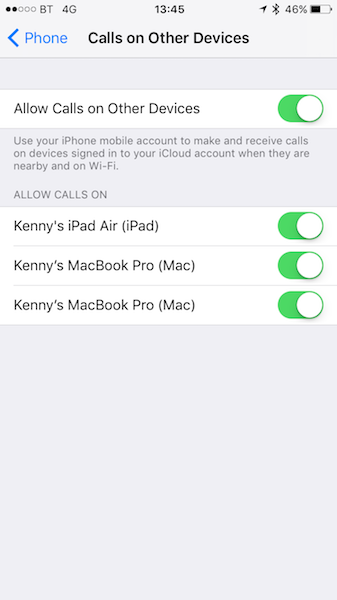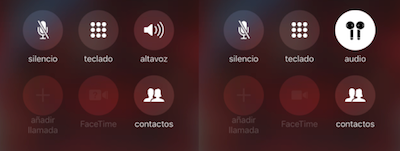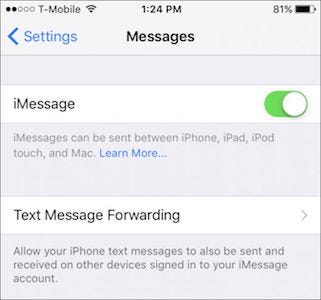Latest news about Bitcoin and all cryptocurrencies. Your daily crypto news habit.
 Apple will release their smart speaker by February 9th, but the specifications are not clear about some of its features
Apple will release their smart speaker by February 9th, but the specifications are not clear about some of its features
This week Apple finally announced that from February 9th they would be selling their HomePod, a new smart speaker to compete with Amazon’s Echo or Google Home (or maybe with Sonos). The HomePod was originally announced on the WWDC last year, at that point expected by the end of 2017.
After all these months, there are still things that are not clear about how the device will work. This can make some users wait for the first reviews, or friends advice, before deciding to spend the $345 it will launch for.
In my previous post I talked about the questions around Apple closing their device to their own Music service. In this post I will look at the open issues around communication services on the HomePod.
Communications in Smart Speakers
If you look at the feature list, “Messages” shows up there, but there was no explanation then about what exactly that meant.
Supporting some sort of communication features in a smart speaker does not only make sense, but is one of the battlefields that Amazon and Google are fighting on with their respective products in this space.
Amazon offers Alexa’s Calling and Messaging Service, which gives you calls and video calls between Echo devices (and the Alexa app). They also offer “Echo Connect”, a device that allows an Echo to be plugged to your phone line and work as a regular phone but hands-free.
Meanwhile, Google Home lets you call any US or Canada number (a feature that Amazon has replicated in their Echo devices), and their new Assistant-enabled smart displays will also support Google Duo video calls.
body[data-twttr-rendered="true"] {background-color: transparent;}.twitter-tweet {margin: auto !important;}
First day back at work, time to kick off our 2018 #GoogleDuo roadmap! Coming soon, smart displays with Duo video calls via #GoogleAssistant: https://t.co/Dkx9TopV1v
— @juberti
function notifyResize(height) {height = height ? height : document.documentElement.offsetHeight; var resized = false; if (window.donkey && donkey.resize) {donkey.resize(height); resized = true;}if (parent && parent._resizeIframe) {var obj = {iframe: window.frameElement, height: height}; parent._resizeIframe(obj); resized = true;}if (window.location && window.location.hash === "#amp=1" && window.parent && window.parent.postMessage) {window.parent.postMessage({sentinel: "amp", type: "embed-size", height: height}, "*");}if (window.webkit && window.webkit.messageHandlers && window.webkit.messageHandlers.resize) {window.webkit.messageHandlers.resize.postMessage(height); resized = true;}return resized;}twttr.events.bind('rendered', function (event) {notifyResize();}); twttr.events.bind('resize', function (event) {notifyResize();});if (parent && parent._resizeIframe) {var maxWidth = parseInt(window.frameElement.getAttribute("width")); if ( 500 < maxWidth) {window.frameElement.setAttribute("width", "500");}}
So of course Apple will add communications to the HomePod. But it is not clear exactly what kind, so I will make some guesses next.
Messages and Calls
In their HomePod product webpage, Apple mentions communications as one of the three elements of the “Intelligent assistant” part of the product.
The main feature is still music, but you can also:
- Ask questions and get basic functionalities like timers or news. This basically matches Alexa’s or Google Assistant’s top use cases.
- Control smart-home devices that are HomeKit compatible. No surprise there.
- And have some control over “calls and messages”.
The last point in particular specifies:
Use HomePod to send messages using just your voice. And when you receive a text, Siri can read it to you. For hands-free conversations, start or receive a call on your iPhone and hand it off to HomePod.
Let’s look at what this can mean in more detail.
How will calls work?
There are no further details on how the calls and texts (or even *what* kind of calls or texts) will work, but one option would be for Apple to extend their Continuity functionality to the HomePod, to support calling and messaging.
Continuity for calls is presented in the iPhone settings as “Calls on Other devices”, and allows other iCloud devices, like iPads and Macs, to make and receive regular calls when in the same Wifi as your iPhone.
This is different from FaceTime, as these calls are regular cellular calls (and billed by your carrier when appropriate) happening from your phone. Simply put, when you call using Continuity from your Mac what really happens is that your Mac is sending your voice back and forth to your iPhone via Wifi, and your iPhone is sending it as a regular call through the cellular network.
So if they were to provide Continuity, HomePod would be just another iCloud device, and would allow calls from your phone when at home. Any regular FaceTime audio call to your iPhone could be picked up from HomePod, and your could be able to ask your HomePod to make a call.
But that is not what Apple’s copy says. It says “start or receive a call on your iPhone and hand it off to HomePod”, which feels more like being able to select a different audio source from the ongoing call screen rather than being able to directly pick up calls from the HomePod.
For instance, today we can switch the audio from an ongoing call to the iPhone’s speaker or to paired AirPods:
So I think that the current description hints as this being the option for the HomePod, which would act as a Bluetooth hands-free for the iPhone. That is functional, but less exciting than the Continuity option, which would allow also to directly answering an incoming call from your HomePod without having to locate where you left your phone, and is also very useful if your hands are busy. (The Bluetooth hands-free profile would also allow that, but since Apple specifically mentions that calls are started in the iPhone it looks that this will not be supported at first).
How will messages work?
Continuity also works for Messages, although the setting is in a different part in the iPhone. It is the “Text Message Forwarding” option:
With this setting your SMS and MMS received in your iPhone are also available in your iPad or Mac. This is also a bit different from iMessage, which is Apple’s own service and which is also available across Apple devices, but in the end the experience for users is that all their texts (iMessages or SMS) are available across all their devices.
Since the copy explicitly mentions that HomePod can send messages, I expect that in this case it will use Continuity, and in practice will be like an iPad linked to the same iCloud account: it will send and receive SMS from your phone and will send and receive iMessages directly. This will be transparent and “magical” for the user, which will not see the green or blue bubbles or probably care about the difference (as the markets in which HomePod is being launched still offer mostly unlimited SMS packages anyway).
But while sending and receiving messages from an iCloud device with a nearby iPhone connected to the same Wifi does not offer any unresolved technical challenges, there is another relevant issue. iPhones, iPads and Macs are designed to be personal devices and have a single iCloud account. The HomePod should not.
What about privacy?
And that is the key aspect for a “Home” device like the HomePod is. It will be a family device, shared by several people. This poses several questions:
- Will it support linking several iCloud accounts to it or just a single one?
- If it just supports one, will it only allow messages from this account? Then the functionality will be limited for the rest of the household members.
- How will multi-user work? Because regardless whether it only supports one or several messaging users, it should ensure that only the relevant recipient can choose to play messages out-loud. It also needs to have some sort of mechanism to understand who is saying “Send a message to mom” and use the right sender and destination for that message. Otherwise I can picture very funny things making the news…
- Will it sync multiple address books from multiple providers? In the example above “mom” is an entry in someone’s phone, but it may be coming from iCloud, Google Contacts or an Exchange server. Will the HomePod take the address book services from the phone (all the authorized users’ phones) and sync them itself?
- How will it authenticate users? Will it share the “Hey Siri” voice profile from the iPhone or users will have to do some voice training for the HomePod itself?
All these things are very relevant when several people share the device and want to use their own communications while keeping them private. I certainly expect that Apple has worked hard into this, and I expect to learn more about it when the device is finally launched, but with the current information I see them as important unanswered questions.
And what about other communication services?
Having calls and texts in your HomePod is nice, but when people in some regions have increasingly replaced SMS with other services like WhatsApp, or some calls are definitely cheaper using Skype, it feels like the communications abilities of a smart speaker could be much improved by allowing third party services on top of it. Unfortunately the first version of the HomePod will not support “apps”, so that means no WhatsApp or Skype natively there.
Skype calls, WhatsApp calls or calls from any other app in your iPhone that support CallKit (the iOS API Apple provides to developers that want to provide voice-over-ip functionality in their iPhone apps) will probably be able to be switched to the HomePod by changing the audio source just like regular calls.
Amazon and Google are not doing better (yet)
To be fair, this is a better situation than what Amazon Echo or Google Home provides, because while both devices can work as Bluetooth speakers, that only works for audio playing but not for hands-free calls. As mentioned above, they support their own calling services or certain interconnection with the regular network, but you cannot receive a call in your phone and bring it hands-free to any of these devices.
And while both are more advanced than Apple in providing support for developers to add new functions to their devices, calling functionality is not yet part of that set, so don’t expect Skype or WhatsApp calls in your Echo or Home soon. I expect this will change at some point, since both Amazon and Google are very aware that to create a sustainable offering in the smart speaker space, developers need to be involved to enrich their product. Let’s hope Apple will follow there too.
Regarding messaging, sending texts with the Echo is possible, and there are some Skills that allow you to do that. Receiving them was not possible until recently, but now Alexa alows third party Skills to provide notifications, which would enable the needed two-way channel for conversations. So third party messaging, beyond Amazon’s own Alexa Messaging Service, will come.
But neither expect WhatsApp messaging for Alexa soon, because WhatsApp would need to support multidevice first(which they don’t), and privacy considerations may make it very difficult that they enable devices that will not support their end-to-end encryption.
Some questions about the HomePod before its launch (2): Communications was originally published in Hacker Noon on Medium, where people are continuing the conversation by highlighting and responding to this story.
Disclaimer
The views and opinions expressed in this article are solely those of the authors and do not reflect the views of Bitcoin Insider. Every investment and trading move involves risk - this is especially true for cryptocurrencies given their volatility. We strongly advise our readers to conduct their own research when making a decision.



